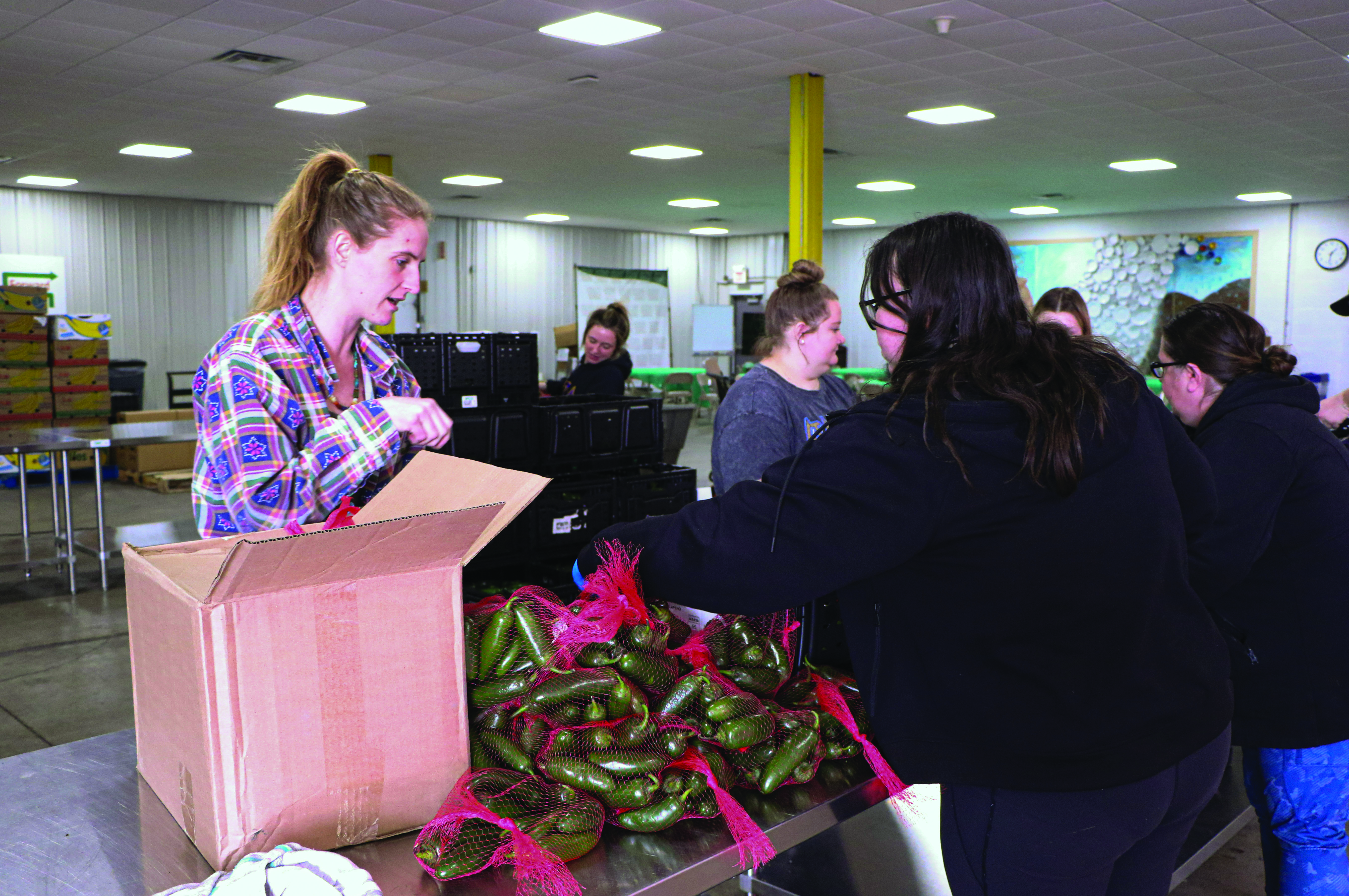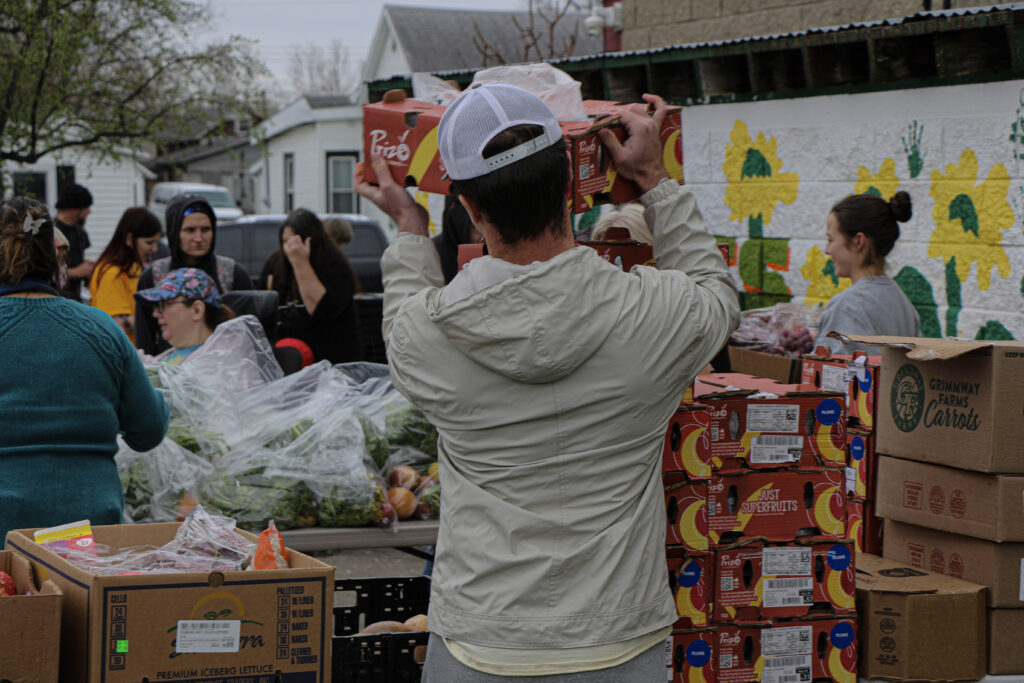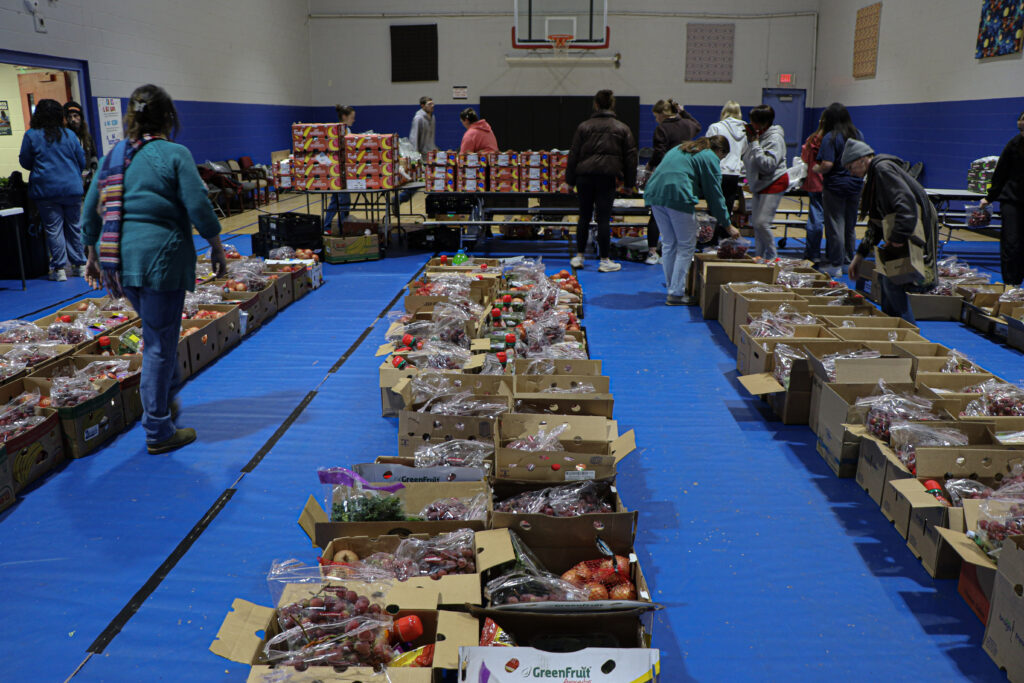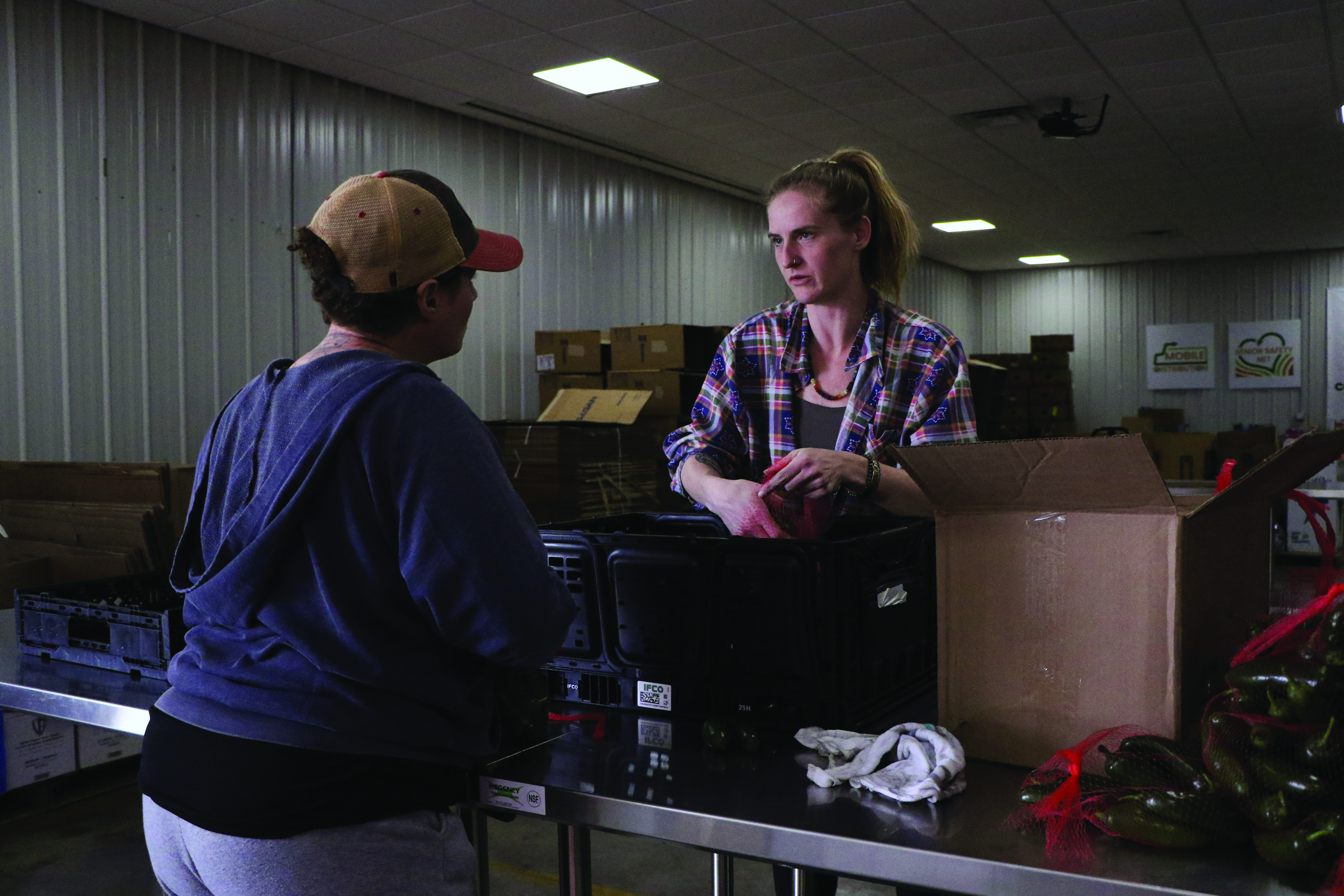It’s a sunny afternoon in Muncie, and a local is gearing up for a grocery run. Bags in hand, they know this won’t be a quick trip.
The nearest grocery store is miles away, and without a car, the trip becomes more of a small adventure. A bus, a couple of transfers, a long walk — just to get to a store where fresh produce isn’t an afterthought.
By the time they get home, the milk is warm, the bread is squished, and the produce is less than perfect.
Muncie, a city of 65,000 residents, has a growing issue that’s becoming increasingly difficult to ignore: food deserts, defined as an area where little fresh produce is available near residents’ homes.
Approximately 64% of Muncie residents live in areas considered food deserts, according to Muncie Neighborhoods.
Becca Clawson, CEO of Second Harvest Food Bank, sees the impact of food deserts first hand in her work.
“Delaware County has one of the highest rates of food insecurity in the state. . . and food deserts are particularly challenging,” Becca says.
The absence of accessible fresh food takes a toll on the community’s health.
“Limited access to fresh and healthy foods also contributes to the higher rates of diseases or chronic illnesses like diabetes, obesity, and heart disease,” Becca says. “… and those all also disproportionately affect minority communities.”
Food insecurity often overlaps with broader health issues, and these chronic conditions are particularly prevalent in low-income and minority populations, according to the American Cancer Society. The society also found that low healthy food accessibility is prevalent in communities with lower life expectancy.
However, the issue goes beyond just the proximity of grocery stores — it is deeply intertwined with larger systemic challenges and social disparities. According to Feeding America, in 2023, it was found that 22% of Black people in the United States experience food insecurity, over double the rate of white people.
Marsh Supermarkets, once a staple in Indiana and Ohio, faced financial struggles that led to their bankruptcy filing in 2017. The closing of multiple Marshes in Muncie left entire neighborhoods without easy access to fresh groceries, further exacerbating the city’s food desert problem, Becca highlights.
Beyond food access, these closures had significant environmental consequences. The loss of nearby grocery stores forced residents to travel longer distances for food.
To help combat food insecurities, multiple organizations in Muncie have made it their goal to provide residents with the food they need.
Second Harvest Food Bank plays a huge role in addressing food insecurity in Muncie and surrounding areas, providing food to local organizations that serve the community in diverse ways.
By collaborating with organizations like the Ross Community Center and Open Door Health Services, Second Harvest helps meet immediate food needs while supporting efforts to address the root causes of food insecurity.
“We’re pushing for systemic change,” Becca says. “Food access is a community-wide issue. It requires a multi-faceted approach to really tackle it head-on.”
Becca highlighted the importance of supporting policies that improve food access, such as expanding Supplemental Nutrition Assistance Program (SNAP) benefits and improving public transportation. SNAP provides food assistance to low and no income people and families living in the United States, according to the Indiana Family and Social Service Administration.
Jacqueline Hanoman, the Executive Director of Ross Community Center, takes a distinctive approach to tackling food insecurity by focusing on education and self-sufficiency. Through the center’s community garden, residents not only gain access to fresh produce but also learn about nutrition, food preparation, and sustainable gardening practices.
“Food insecurity exists not because there’s not enough food. Food insecurity exists because there’s not enough sustainable access to food,” Jacqueline says.
This focus on education aligns with Second Harvest’s mission to ensure that food relief efforts are part of a larger strategy for long-term change. The Ross Community Center also aims to foster sustainable solutions.
“We have to get to the point in our society where it’s no longer needed, where lunch does not become an absolute necessity because [residents] can’t have it anywhere else,” Jacqueline says.
One of the initiatives they are launching is a program called “Cook and Thrive,” which focuses on communal cooking and education.
“We’re going to cook together and talk about how easy it is to make healthy [meals],” Jacqueline says.
This program aligns with Second Harvest’s goal of not only addressing hunger but also equipping communities with the knowledge and resources to maintain long-term food security.
To foster long-term food security and combat the negative health effects of food insecurity, Second Harvest also provides food to Open Door Health Services. Open Door is a nonprofit that provides primary, urgent, and preventive health services as well as select specialty services and social support programs.
Bryan Ayars, the president and CEO of Open Door Health Services, approaches food insecurity from a health perspective through its “Food as Medicine” initiative.
This program integrates food access into healthcare by screening patients for food insecurity and providing them with nutritious food options to improve their overall health for low-to-no-cost. The initiative is rooted in the belief that nutrition is foundational to preventing chronic illnesses such as diabetes, which disproportionately affects low-income communities, according to the American Diabetes Association.
“When people don’t have access to nutritious food, they can’t focus on anything else,” Bryan says. “It impacts their ability to go to work, their children’s performance in school, and their overall mental and physical health.”
Second Harvest’s partnerships with organizations like the Ross Community Center and Open Door Health Services represent a holistic approach to addressing food insecurity. Each organization focuses on a different aspect of the issue — whether it’s providing shelter, supporting education, fostering self-sufficiency, or integrating food into healthcare.
These organizations continue to push for long-term solutions that will reshape food access in Muncie. As initiatives grow and partnerships strengthen, the goal remains the same: to build a network of support that goes beyond immediate hunger relief.

Cristal Mariano-Vargas, Ball Bearings




Sources: American Cancer Society, American Diabetes Association, Feeding America, Indiana Family and Social Service Administration, Merriam-Webster, Muncie Neighborhood



